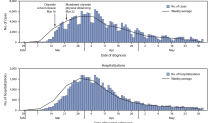New York City needs to prioritize residents who are at higher risk of hospitalization and death from COVID-19 and avoid repeating the same mistakes made in the spring, according to a new report by the Centers for Disease Control and Prevention.
Black and Latino New Yorkers, as well as people living in neighborhoods with higher poverty rates, are more likely to be hospitalized and die from the respiratory disease, the CDC said in a report released Thursday. Others who are considered vulnerable population include people over 75 years old and people with underlying medical conditions, and mitigating virus transmission among the groups "is an urgent priority," the report said.
Once the center of the pandemic in the U.S., New York City had a total of 203,792 confirmed COVID-19 cases. More than 54,200 of those cases (26.6%) led to hospitalization and nearly 18,700 (9.2%) of those New Yorkers died, according to the CDC. That means 32.1% of people who were hospitalized were known to have died.
Although the CDC admits more data that include variables such as race and underlying medical condition is needed, the first wave of COVID-19 clearly "demonstrated that persons who were older, had underlying medical conditions, or resided in poorer neighborhoods, and racial and ethnic minority populations suffered disproportionately from SARS-Cov-2 infection and death."
The age of the infected, hospitalization rate and death rate were consistently highest in the Bronx and lowest in Manhattan, the CDC found.
The data collected from During Feb. 29 to June 1 shows that some neighborhoods with high transmission rates (such as North Bronx and Northwest Queens) also had high testing rates, but some neighborhoods with high transmission rate had lower testing rate (Southeast Queens, East Brooklyn, West Bronx, and Northern Manhattan). This suggests barriers to accessing testing in areas with considerable community transmission, the report said.
While the report did not specifically mention or analyze data involving schools, it included a chart that may frustrate New York City public school parents further following the mayor's move to switch them fully remote as of Thursday.
The citywide positivity rate has risen along with cases and hospitalizations, reflecting the national trend, but the in-school positivity rate is below 0.2 percent, indicating schools are not the source of spread. According to the CDC, it didn't appear they were the source of spread in March either, based on the chart below.


